Back to my wool coat.
I am trying to be better about trimming stray threads as I go. Now that I am in a new sewing room setup, I believe I am going to have to make myself one of those thread catcher things. Perhaps that will motivate me to keep clipping those threads!
There is one tricky spot on this design that requires clipping to stitch the bodice front dart which happens on the front facing and on the coat front. I used my trusty gusset reinforcement trick and used another scrap of silk organza (I am getting low on my stash - it's amazing how often that stuff comes in handy!).
Because this wool has a very loose weave, I added another layer of protection with a dab of fray check. Miraculously, this fabric does not seem to shred that easily, but I don't want to have an issue with this clip down the line. Someday I will have a project that is suited to arrow tacks, but for now, this is the route I am going.
Because of all the bulk, I also decided to open the top half of the dart and press the heck out of that thing.
The instructions suggest reinforcing the opening edge with a length of twill tape.
I went ahead with it, although I am not sure that this stable fabric really requires that step. But it can't do any harm. The tape will be caught up in the seam that connects the facing to the coat.
Speaking of seams . . .
This is probably the thickest fabric I have every worked with, and it continues to require a lot of time at the ironing board.
Each seam is pressed flat to set the stitches.
Next, it is pressed open.
And then, it is pressed in the open position with added pressure of the clapper. Sometimes I did this more than once.
I can't say enough about this sewing tool. There is no way that any iron would be able to press these thick layers flat without it.
I also added a few more catch-stitches at seam junctures to help keep everything in place.
I have definitely had a workout hauling this thing back and forth between the machine, the table, and the ironing board! But I believe all that extra work will be worth the effort.
I went with a fusible interfacing because a sew-in seemed like the wrong choice.
Unfortunately, the stuff started to bubble as soon as I started moving those pieces around, even though I let those pieces cool completely before moving them during the fusing. Does anyone have suggestions on a good fusible?
But other than that hiccup, everything else went together without much trouble.
I added a bit of width to the cuffs.
The sleeves start to flare out from the hemline, but the cuff pieces are a rectangle. This means that the cuff is smaller than part of the sleeve. It was not such an issue with my drapey blue coat, but I expected it might be with this thick coating.
So far, it seems to be working!

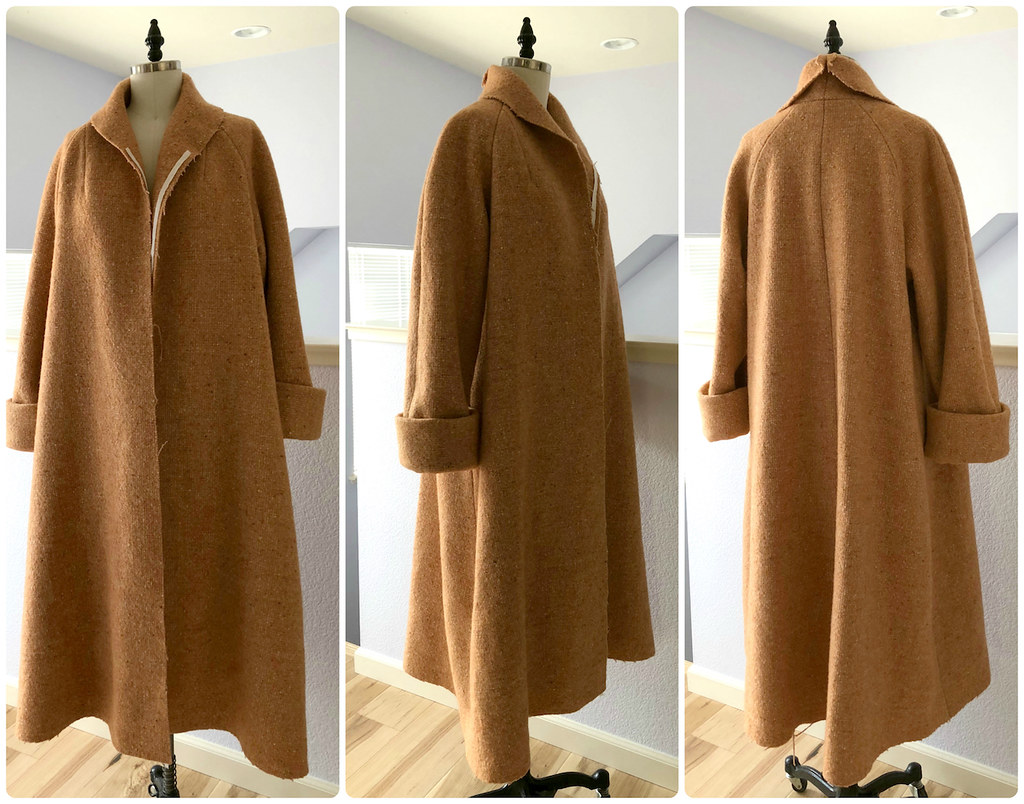
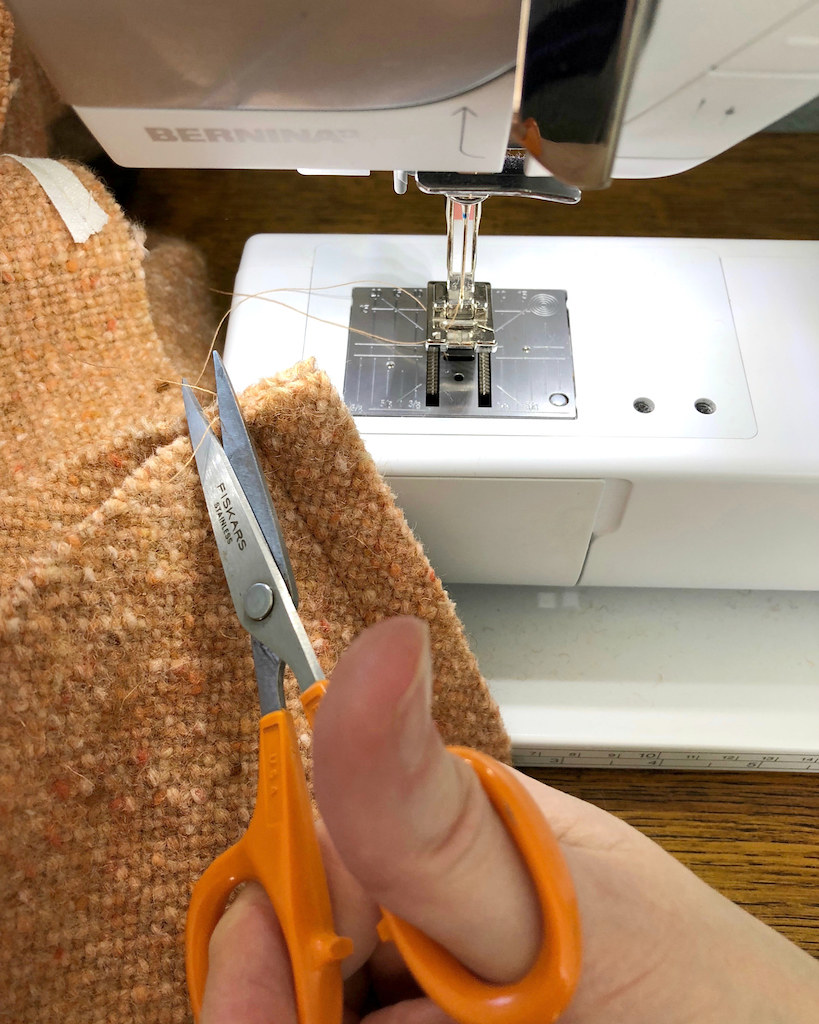
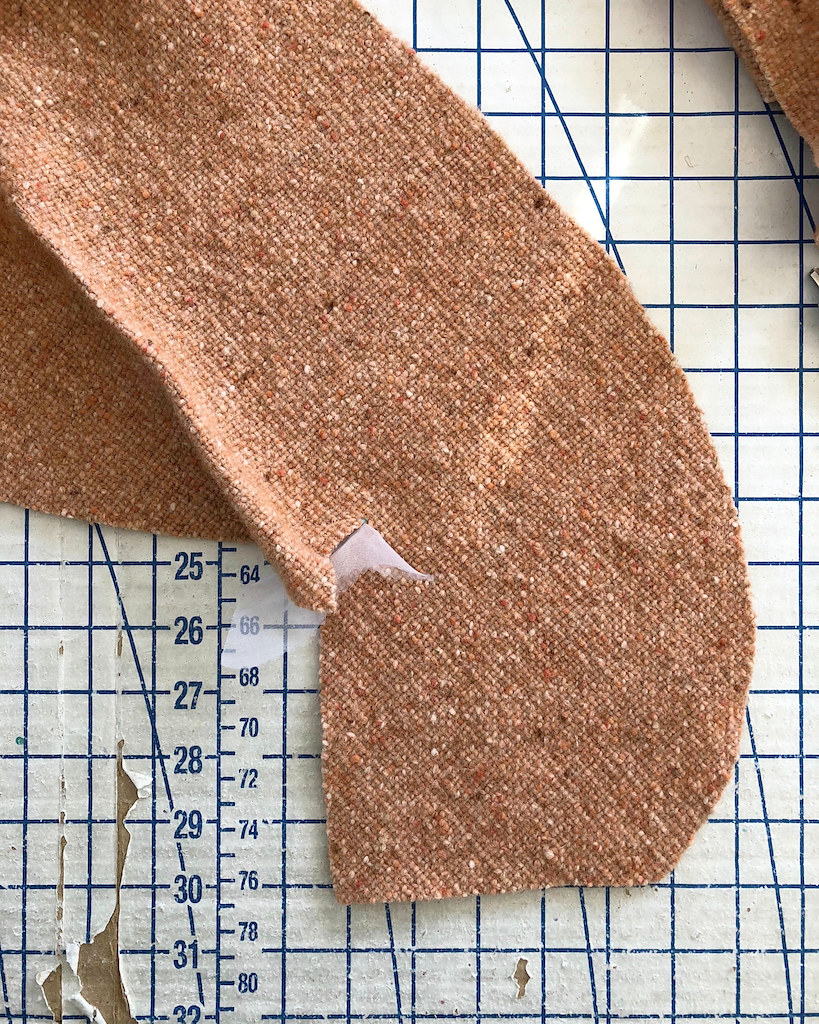
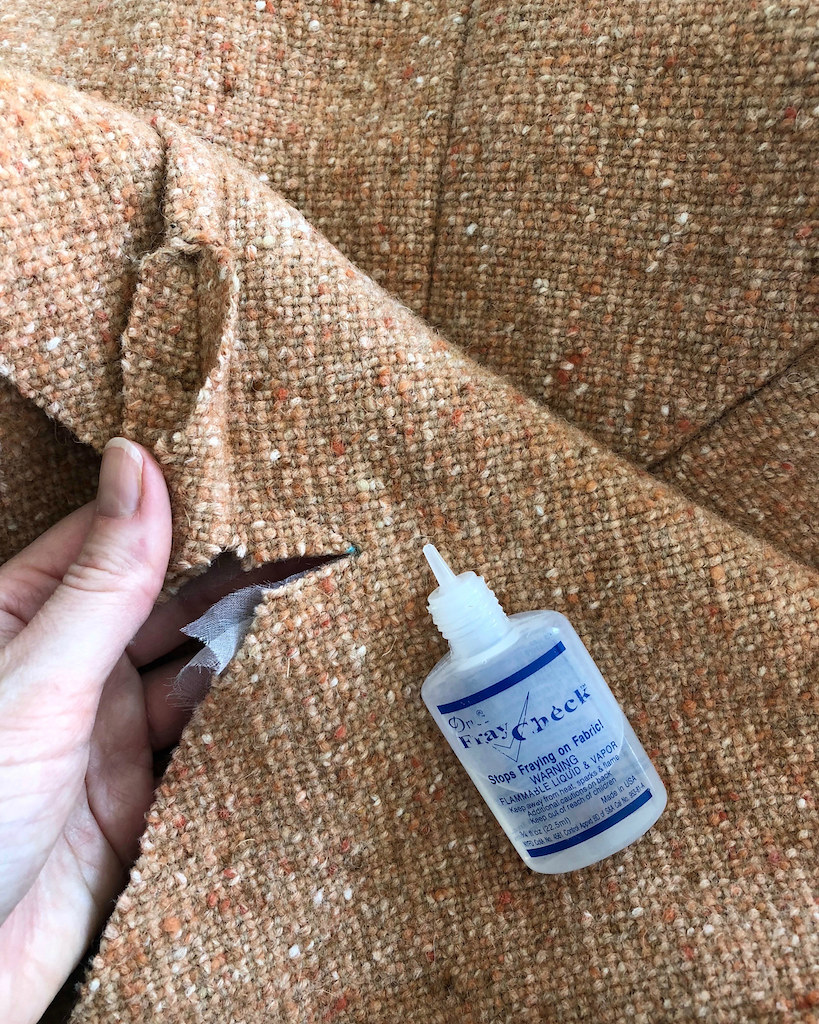
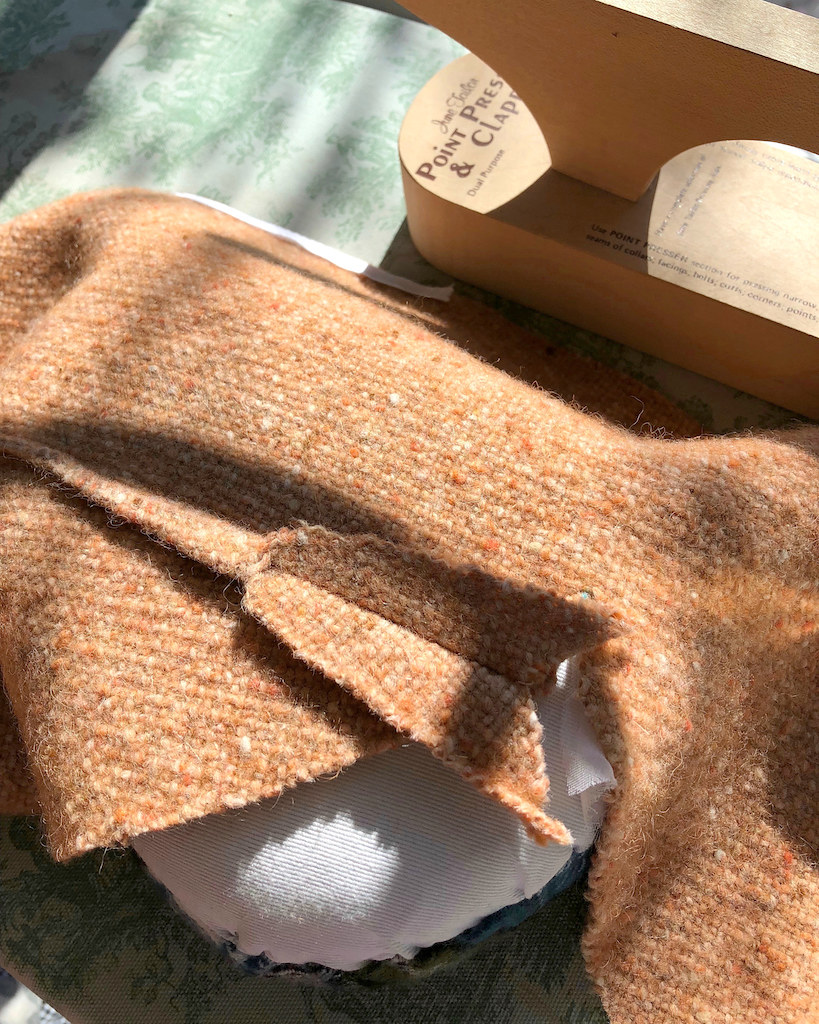




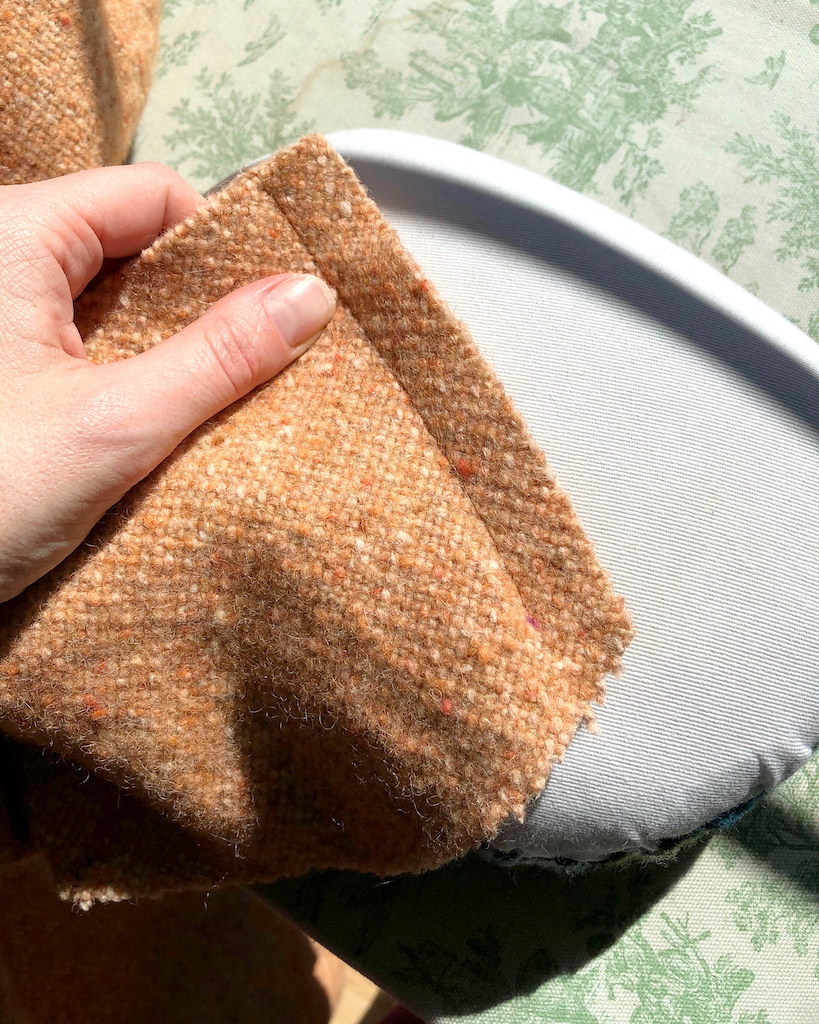
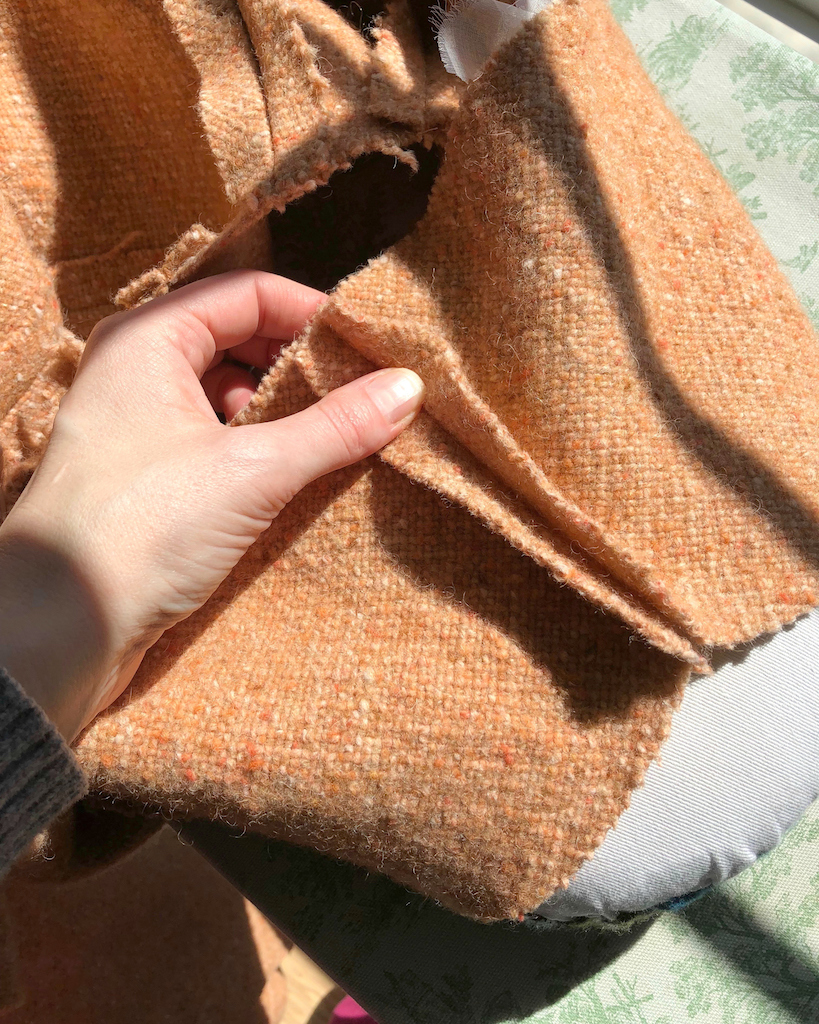

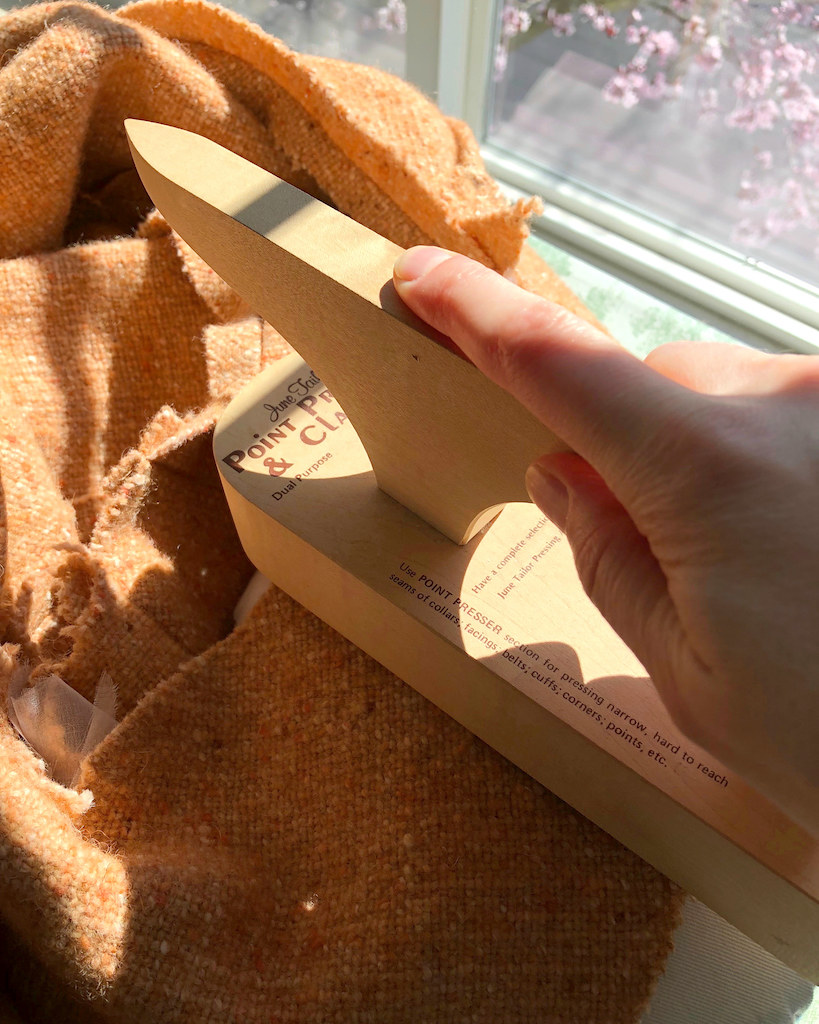


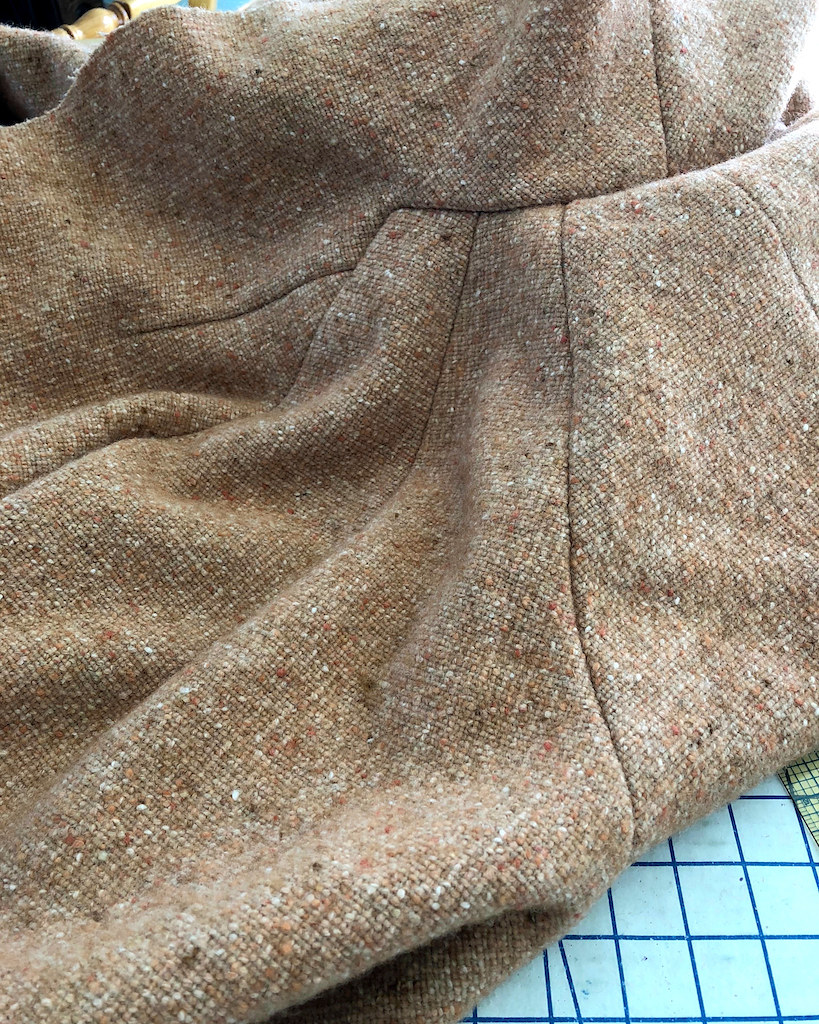
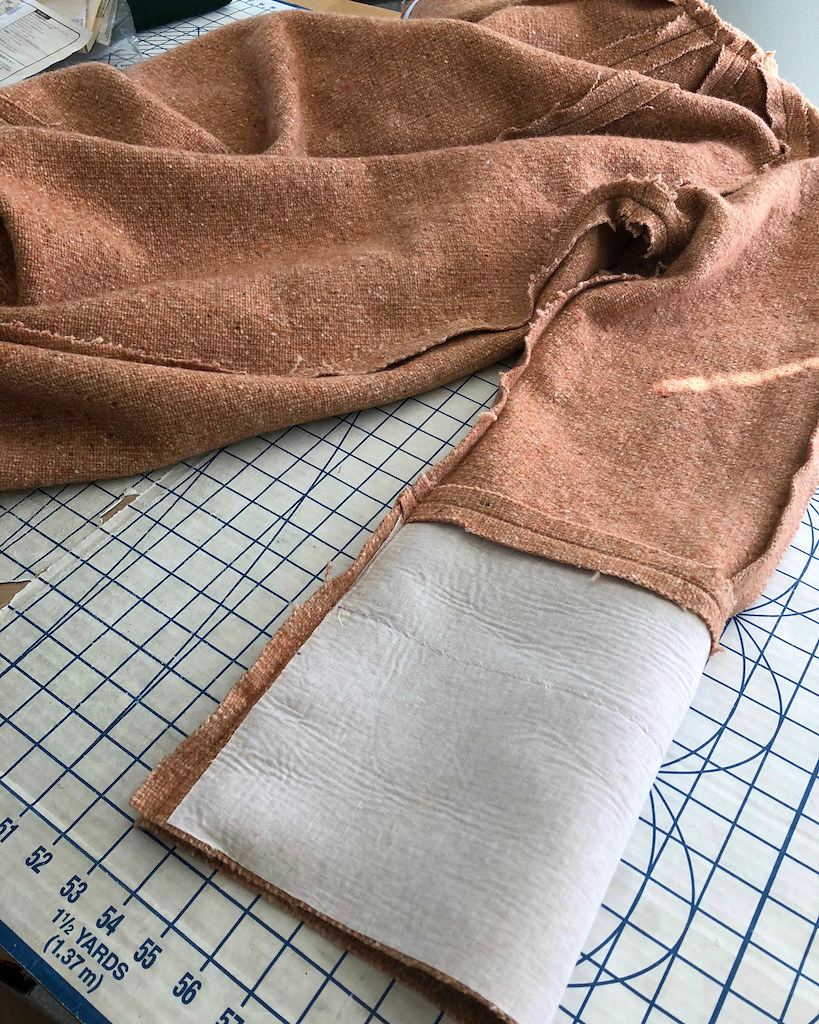


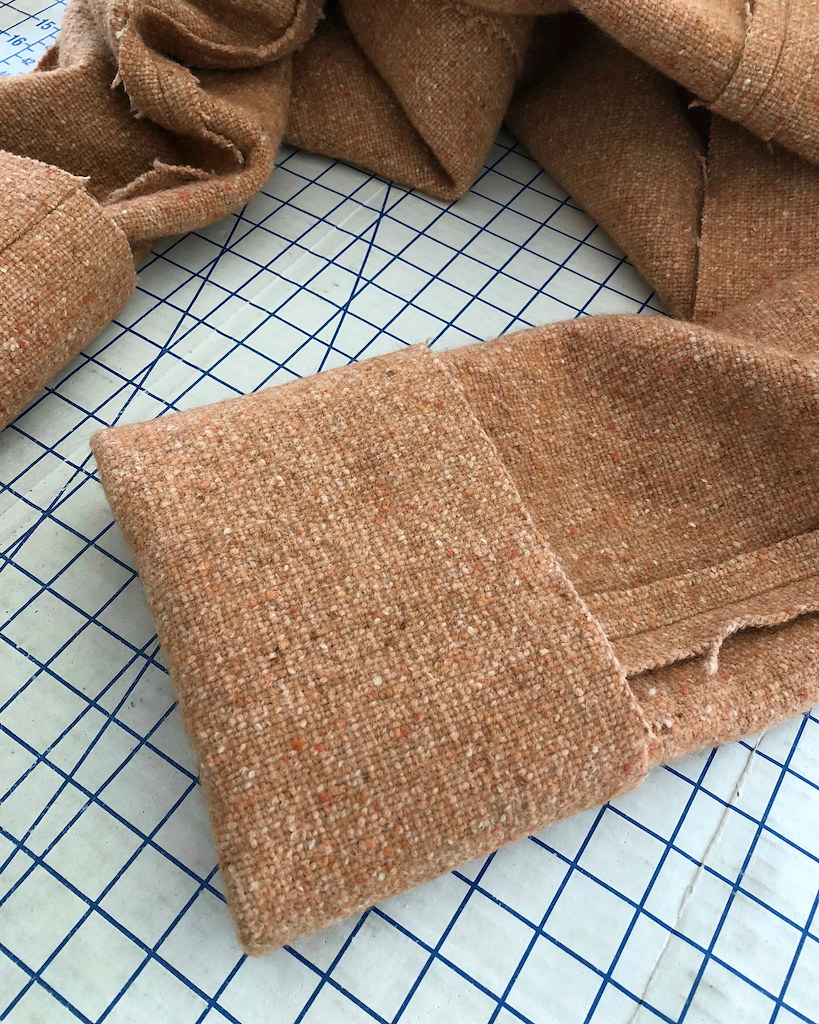
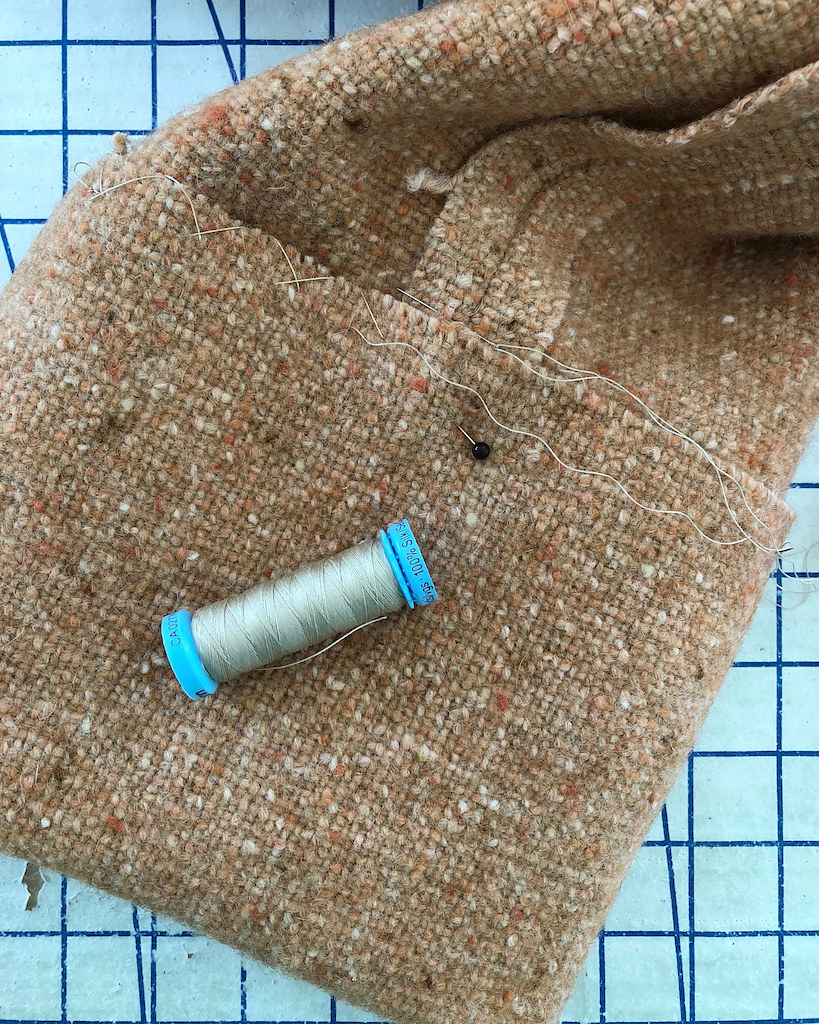

I love the collar, neck, & shoulders of this coat -- just beautiful!
ReplyDeleteI hate fusible interfacing, and after a fail or two with it, decided to never use it again so I'm no expert at figuring out problems with it. That said, it seems to me that the thickness and heavy slub of the material may not provide enough surface contact with the glue of the interfacing.
I can't wait to see the finished coat!
It's such a gorgeous tweed. Having recently completed a heavy coat I feel your pain with all the pressing and catch stitching seams.
ReplyDeleteI only buy fusible from Fashion Sewing Supply, and have interfaced most (maybe all?) coats and jackets I've worked on with their fusible weft insertion interfacing, with great results. I use the fusible tricot and lightweight quite a lot as well in regular sewing. I've nearly never experienced bubbling, even after the wash (though obviously not an issue for a coat!). I think I only did once and it was because I forgot to pre-shrink, so I had two competing things happening at the same time.
I do press as directed, let cool, press from the opposite side, let cool, then press again on the fusible side... which could be overkill, but I figure the added insurance helps!
i LOVE A GREAT COAT AND THIS ONE FITS THAT CATEGORY!
ReplyDeleteYou're gonna twirl in this, aren't you?
ReplyDeleteI second fashion sewing supply for your best chances on any interfacing. She has great sales maybe twice a year. This coat is going to be so beautiful. I admire your clapper,something (maybe the last on the list) that I’ve been intending to buy about 40 years. I do have a sleeve board, roll, and ham and use a personal sized cutting board kept in the sewing area to occasionally pound/clap a steamy seam.
ReplyDeleteThis is just SO beautiful. I think most of us feel your pain with fusible interfacings.
ReplyDeleteAs usual, I am breathless with your attention to detail!
ReplyDeleteI am curious about what iron you use. That way, when I need to replace my current one, I can get the correct one! Thanks!
I second the suggestion of Fashion Sewing Supply, that's the only interfacing I use. Also on a thick tweed like that it will fuse well but I always find the fabric loft makes it fuse differently than on a flatter fabric, but it does not appear any differently on the right side. I am noticing lately how people pin, you pin parallel to the seam? I always pin at a 90 degree angle to the seam. I'm on a quest to see if it matters either way :)
ReplyDeleteAfter reading the comments I will only use Fashion Sewing Supply for fusible interfacing. It has been recommended for shirt collars and cuffs by the experts.
ReplyDeleteBut I agree for the most part with the lady who said she hates fusible interfacing. I use muslin, organza or sew in hair canvas for everything except waistbands on cotton pj pants.
Your coat is reminds me of a camel colored wool coat my grandmother owned in the early 60's. It was a thick wool and with the sleeves and flare it was quite heavy but warm. I think you will enjoy your coat very much.